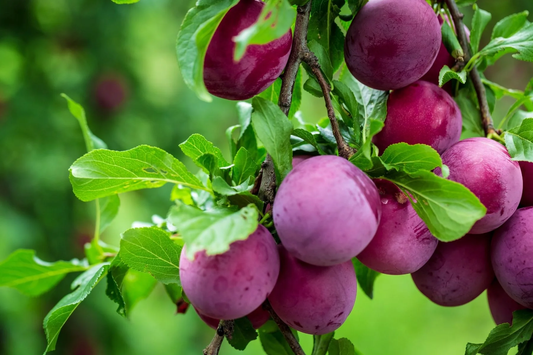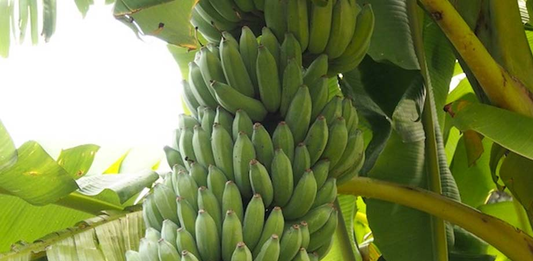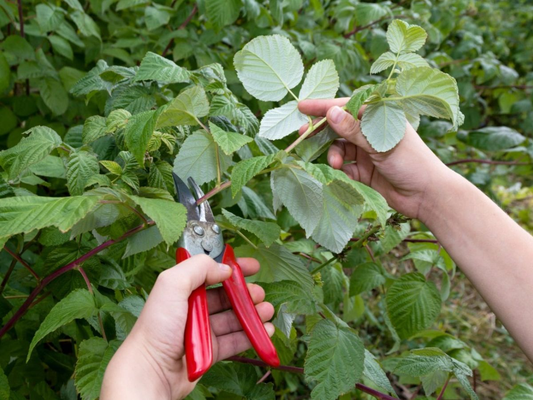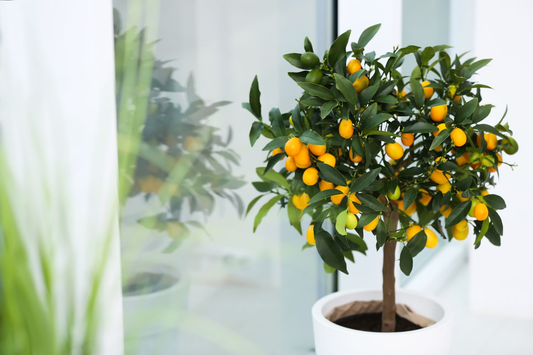How to Start a Compost Bin
Share
- 1. Introduction
- 2. Why Start a Compost Bin?
- 3. Choosing the Right Compost Bin for Your Needs
- 4. What Can Be Composted?
- 5. Setting Up Your Compost Bin
- 6. Composting Dos and Don’ts
- 7. How Long Does it Take to Compost?
- 8. Troubleshooting Common Composting Problems
- 9. Using Finished Compost
- 10. Composting Tips for Different Environments
- 11. Frequently Asked Questions (FAQ)
1. Introduction
Composting is a natural process that turns organic waste into nutrient-rich soil. It involves the decomposition of plant-based materials like food scraps, leaves, and yard waste by microorganisms, turning these materials into humus, which can be used to enrich garden soil. Not only is composting a way to recycle waste, but it also offers numerous environmental, economic, and gardening benefits that contribute to a healthier planet and garden. In this blog, we will guide you on how to start a compost bin and provide you with essential tips to ensure your composting journey is successful.
What is Composting?
Composting is the process of breaking down organic matter into a dark, crumbly substance known as compost, which can be used to improve soil quality. The decomposition process is aided by microorganisms like bacteria, fungi, and insects that break down the organic material into simpler forms, ultimately creating nutrient-rich compost.
Why Composting is Important?
- Reduces Waste: Composting keeps organic materials out of landfills, diverting them from the waste stream and reducing landfill waste.
- Enriches Soil: The composted material adds essential nutrients and improves soil structure, helping plants grow stronger and healthier.
- Supports Eco-Friendly Gardening: Composting reduces the need for chemical fertilizers and pesticides, promoting sustainable gardening practices.
- Reduces Carbon Footprint: By composting organic waste instead of sending it to a landfill, you reduce the production of methane—a potent greenhouse gas.
What to Expect in This Blog
This blog will walk you through the essential steps to start a compost bin, from choosing the right bin for your needs to understanding the types of materials that can be composted. We’ll also provide troubleshooting tips and advice on maintaining your compost bin to ensure the best results. Here's what you can expect:
- Choosing the right compost bin for your needs.
- Identifying what materials can and cannot be composted.
- Step-by-step instructions on setting up your compost bin.
- Composting dos and don’ts to avoid common mistakes.
- How to troubleshoot and maintain a healthy compost bin.
- Tips for using finished compost in your garden to improve soil health.

2. Why Start a Compost Bin?
Starting a compost bin comes with a variety of benefits, both for the environment and for your wallet. Composting is a sustainable practice that contributes to healthier soil, a cleaner planet, and a more cost-effective gardening experience. Below, we explore the environmental, economic, and health-related benefits of composting.
Environmental Benefits
- Reduces Landfill Waste: Composting helps divert organic waste from landfills, where it would otherwise take up valuable space and decompose anaerobically (without oxygen), releasing methane—a potent greenhouse gas.
- Decreases Carbon Footprint: Composting organic waste reduces the need for transportation to landfills, lowering the carbon emissions associated with waste disposal. Additionally, composting helps to sequester carbon in the soil, combating climate change.
Economic Benefits
- Reduces Waste Disposal Costs: Composting reduces the amount of waste sent to landfills or incinerators, potentially lowering waste management fees for households and municipalities.
- Improves Soil for Gardening: By enriching the soil with compost, you can enhance its fertility and structure, reducing the need for expensive chemical fertilizers. Healthy soil leads to better plant growth, increasing your yields and reducing the costs of buying store-bought fertilizers.
Health Benefits
- Reduces Harmful Chemicals in Soil: Composting helps to naturally enrich the soil with nutrients, decreasing the need for chemical fertilizers that can be harmful to both the environment and human health.
- Promotes Healthy Plants: Compost improves soil health by increasing its organic matter content, enhancing its ability to retain moisture, and promoting beneficial microbial activity. This creates an environment where plants can thrive, improving their overall health and resilience to pests and diseases.
3. Choosing the Right Compost Bin for Your Needs
Choosing the right compost bin is crucial for ensuring a smooth composting process. The type of compost bin you select will depend on several factors, such as the size of your space, your composting needs, and your budget. Below, we’ll explore the factors you should consider when selecting a compost bin and provide an overview of the different types available.
Factors to Consider
- Size of Your Space: Consider how much space you have available for composting. If you live in an apartment, you may need a smaller, more compact bin like a worm bin. For larger homes with a garden or yard, a larger compost bin or tumbler may be more suitable.
- Composting Needs: Think about how much waste you produce. A family of four will likely need a larger compost bin compared to a single person. If you have a garden, you may want a larger bin to produce more compost for soil enrichment.
- Budget: Compost bins come in a wide range of prices. Worm bins and DIY bins can be cost-effective options, while tumblers and stationary bins may require a higher investment.
Types of Compost Bins Available
Tumbler Bins
Pros:
- Quick composting: Tumbler bins rotate, allowing for better aeration and faster decomposition of organic material.
- Easy to use: Simply turn the bin to mix the contents, which speeds up the composting process.
- Compact: Great for small to medium-sized spaces, including backyards or patios.
Cons:
- Cost: Tumblers are typically more expensive than stationary bins.
- Limited capacity: Depending on the size, they may not be ideal for large households or gardening operations.
- Frequent turning: Requires regular maintenance to ensure efficient composting.
Best for: Quick composting in small to medium spaces. Ideal for gardeners who need compost in a shorter timeframe.
Stationary Bins
Pros:
- Large capacity: Ideal for households or gardens that produce a lot of organic waste.
- Low maintenance: Stationary bins don’t require frequent turning like tumblers, though occasional aeration can help speed up the process.
- Cost-effective: Typically more affordable than tumblers and worm bins.
Cons:
- Slower composting: Without regular aeration, decomposition can take longer than in a tumbler bin.
- Space requirements: Larger stationary bins need more space, making them unsuitable for apartments or smaller properties.
Best for: Larger households or gardens where high quantities of compostable materials are produced. Works well for people who don’t need compost quickly.
Worm Bins (Vermicomposting)
Pros:
- Space-saving: Worm bins are compact and perfect for apartments or smaller spaces.
- Ideal for organic waste: They’re great for composting kitchen scraps and produce nutrient-rich compost known as "worm castings."
- Low maintenance: Worm bins require minimal effort to maintain once set up.
Cons:
- Limited capacity: Best for small households or people who generate minimal organic waste.
- Requires monitoring: Needs to be kept at the right temperature and moisture level to keep worms healthy.
- Potential odor: If not maintained correctly, worm bins can produce odors.
Best for: Apartment dwellers or small households. Perfect for composting food scraps in a space-efficient way.
DIY Compost Bins
Pros:
- Cost-effective: DIY bins are inexpensive to create, often using materials you already have around the house.
- Customizable: You can build the bin to suit your needs, adjusting the size and design for your space.
- Environmentally friendly: Using recycled materials to build a compost bin is an eco-friendly option.
Cons:
- Time-consuming: Building your own compost bin takes time and effort compared to buying a pre-made one.
- Less durability: DIY bins may not last as long as commercial bins, depending on the materials used.
Best for: People who enjoy DIY projects and have basic tools. Ideal for budget-conscious gardeners who have space for a larger, homemade bin.

4. What Can Be Composted?
Understanding what can and cannot be composted is essential for creating high-quality, nutrient-rich compost. Composting works best when you have a mix of green and brown materials. Each material type serves a unique purpose in the decomposition process. In this section, we’ll break down the different compostable materials and explain how to balance them for optimal composting.
Green Materials
Green materials are rich in nitrogen and provide the energy needed for microorganisms to break down organic matter. These materials are typically fresh, moist, and high in protein. Some common green materials include:
- Fresh Grass Clippings: A great nitrogen source, but be sure to mix them with brown materials to avoid clumping.
- Vegetable Scraps: Leftover peels, cores, and trimmings from fruits and vegetables provide nitrogen and moisture.
- Coffee Grounds: Rich in nitrogen and beneficial microorganisms, coffee grounds also help improve soil structure.
Brown Materials
Brown materials are rich in carbon and provide the necessary structure and aeration to the compost pile. These materials are often dry and fibrous. Some common brown materials include:
- Dry Leaves: Fallen leaves are an excellent source of carbon, and they help improve the texture of the compost.
- Straw: A light, fibrous material that provides air pockets and improves compost aeration.
- Shredded Newspaper: A readily available brown material that adds carbon and helps with moisture absorption.
- Cardboard: Shredded cardboard adds bulk and carbon to the compost, though it should be torn into small pieces for quicker decomposition.
Avoiding Contaminants
Not all organic materials are suitable for composting. Some materials can introduce contaminants or disrupt the composting process. Be sure to avoid composting the following:
- Meat: Meat can attract pests and produce unpleasant odors during decomposition.
- Dairy: Like meat, dairy products can attract pests and create bad smells as they break down.
- Oils and Fats: These substances don’t decompose properly and can create a greasy, smelly mess.
- Pet Waste: Feces from carnivorous animals can contain harmful pathogens that are difficult to break down.
- Diseased Plants: Composting diseased plants can spread pathogens and pests to your garden when the compost is used as fertilizer.
Balancing Green and Brown Materials
For optimal composting, it's important to strike the right balance between green and brown materials. A good rule of thumb is to aim for a 2:1 ratio of brown to green materials. Too many green materials can result in a slimy, smelly pile, while too many brown materials can slow down the decomposition process. Here are some tips to help you balance your materials:
- Layering: Alternate layers of green and brown materials to create airflow and encourage decomposition.
- Shredding Materials: Shredding large or fibrous materials, like cardboard and leaves, will help them break down more quickly and evenly.
- Monitor Moisture: Compost should be moist, but not too wet. If it’s too dry, add water or more green materials; if it’s too wet, add more brown materials.
5. Setting Up Your Compost Bin
Setting up your compost bin properly is essential for creating high-quality compost in a timely manner. This step-by-step guide will walk you through the process, from choosing the right location to maintaining your compost bin to ensure optimal decomposition.
Step 1: Choose the Location
The location of your compost bin is crucial for its success. Consider the following when choosing the spot:
- Well-drained area: Your compost bin should be placed in an area that drains well to prevent water from accumulating at the bottom of the bin, which could cause the compost to become too wet and smelly.
- Accessibility: Choose a location that is easy to access so you can add materials and turn the compost regularly without hassle.
- Not too exposed to wind or direct sunlight: Wind can dry out your compost too quickly, while direct sunlight can overheat it. Aim for a spot that gets some sunlight but is sheltered from strong winds.
Step 2: Prepare the Base
Before you start adding compostable materials, prepare the base of your compost bin:
- Start with brown materials: Lay down a layer of dry, carbon-rich materials (such as straw, dry leaves, or shredded newspaper). This helps improve aeration and prevents the bin from becoming too compacted.
- Optional: Add a layer of soil: Adding a small amount of soil can help introduce beneficial microorganisms that will speed up the decomposition process.
Step 3: Add Materials Gradually
To create an effective compost pile, it’s important to layer your green and brown materials. Here’s how to do it:
- Alternate layers: Add a layer of green materials (such as vegetable scraps, coffee grounds, or grass clippings) followed by a layer of brown materials (such as leaves, straw, or cardboard). Aim for a 2:1 ratio of brown to green materials.
- Gradual addition: Add materials gradually, building up your compost bin over time rather than all at once. This allows for better aeration and more consistent decomposition.
Step 4: Turn Your Compost Regularly
Turning your compost bin is an essential part of maintaining a healthy compost pile. Here’s why and how to do it:
- Aeration: Turning your compost bin helps aerate the pile, ensuring that the microorganisms have enough oxygen to break down the organic material efficiently.
- Speed up decomposition: Regular turning speeds up the decomposition process and helps prevent the compost from becoming compacted, which can slow down the breakdown of materials.
- How to turn: Use a compost fork or shovel to gently mix the contents of the bin every 1–2 weeks, or whenever the compost appears to be slowing down. Make sure to rotate the contents from the edges to the center to ensure even decomposition.
Step 5: Maintain Proper Compost Conditions
Proper moisture, aeration, and temperature are critical to the composting process. Follow these tips to maintain the right conditions:
- Moisture level: Your compost should be moist, but not too wet. The consistency should be like a wrung-out sponge. If it’s too dry, add water or more green materials; if it’s too wet, add brown materials like dry leaves or shredded newspaper.
- Aeration: Regularly turn the compost to keep it well-aerated. You can also use a compost aerator tool if turning by hand is difficult or you have a large compost bin.
- Temperature: Compost piles should ideally reach temperatures between 130°F and 160°F (54°C to 71°C) for optimal microbial activity. If the pile cools down, turn it to reactivate the decomposition process. If it’s too hot, add more brown materials to cool it down.

6. Composting Dos and Don’ts
Composting is an easy and sustainable way to recycle organic waste, but it’s important to follow a few simple guidelines to ensure your compost bin remains healthy and effective. Here are the key composting dos and don’ts to keep in mind:
Do's
- Regular Turning: Turn your compost every 1–2 weeks to promote aeration and speed up decomposition. This ensures the microorganisms in the compost have access to oxygen.
- Keep It Moist (But Not Too Wet): Moisture is essential for the decomposition process. Keep your compost bin as moist as a wrung-out sponge, but avoid it becoming too soggy, as this can lead to odors and slow down decomposition.
- Use a Variety of Compostable Materials: Aim to add a balance of green (nitrogen-rich) and brown (carbon-rich) materials to your compost. This ensures that the decomposition process happens efficiently and results in high-quality compost.
Don'ts
- Overload with Wet, Green Material: While green materials are important, too many wet, nitrogen-rich materials like grass clippings or food scraps can create a slimy, smelly pile that’s difficult to compost. Make sure to balance them with enough brown materials.
- Adding Meat, Dairy, or Oily Foods: Meat, dairy products, and oily foods can attract pests and create unpleasant odors. These items don’t break down properly and should be avoided in your compost bin.
- Ignore Aeration: Proper aeration is key to fast, efficient composting. Avoid letting your compost bin become compacted. Regularly turn or aerate the pile to ensure oxygen reaches all areas of the bin for optimal decomposition.
7. How Long Does it Take to Compost?
The time it takes for compost to break down depends on various factors, including the composting method you choose, as well as how you manage your compost bin. Here’s a general timeline for composting and what factors affect its speed:
Timeline Overview
- Hot Composting: If you opt for hot composting, which involves maintaining a higher temperature (130°F–160°F), your compost will break down much quicker. Hot composting typically takes around 2-3 months to produce finished compost, as the heat speeds up microbial activity.
- Cold Composting: For a more passive approach, cold composting relies on slower decomposition. This method can take anywhere from 6-12 months for the compost to fully break down, but it requires less effort in terms of turning and temperature control.
Factors Affecting Decomposition Speed
- Temperature: The warmer your compost bin, the faster the breakdown. Hot composting reaches higher temperatures, which accelerates the decomposition process.
- Moisture: Consistent moisture is key. If your compost is too dry, decomposition will slow down; if it’s too wet, it can become soggy and start to smell. Maintaining the right moisture level will help speed up the process.
- Turning: Regular turning of your compost bin ensures better aeration, which increases microbial activity and speeds up the breakdown of materials. Without turning, compost can become compacted, slowing down the process.

8. Troubleshooting Common Composting Problems
Composting is generally easy, but sometimes issues arise that can hinder the process. Here are some common composting problems and their solutions:
1. Odor Problems
- Causes: A foul smell typically occurs when there is an excess of green material (such as food scraps or grass clippings) or a lack of aeration. The compost pile may become anaerobic, meaning it doesn’t get enough oxygen for the microorganisms to break down the materials properly.
-
Fixes:
- Balance the compost by adding more brown materials (like leaves or straw) to balance the nitrogen in green materials.
- Turn the pile regularly to introduce more air, which helps break down materials aerobically.
- If the smell persists, check the moisture level, as a too-wet pile can also cause odors. Add dry materials to balance the moisture.
2. Too Wet or Too Dry
- Identifying the Problem: Compost should be as moist as a wrung-out sponge. If it’s too wet, it will smell and become slimy. If it’s too dry, it will not decompose efficiently.
-
Adjusting Moisture:
- Too Wet: If the compost is too wet, add dry, carbon-rich materials like straw, leaves, or shredded newspaper. Also, make sure to turn the pile to allow for better aeration.
- Too Dry: If the compost is too dry, add water gradually while turning the pile. Be sure not to over-wet it, as that can lead to other problems.
3. Pests and Critters
- Problem: Rodents and insects, such as flies or ants, can sometimes invade your compost bin if food scraps or other attractants are left exposed.
-
Prevention:
- Cover food scraps with a layer of brown materials to minimize odors and discourage pests.
- Ensure the compost bin has a secure lid or cover to prevent animals from getting in.
- If using a stationary bin, consider adding a layer of wire mesh at the bottom to prevent rodents from burrowing in.
4. Slow Decomposition
- Causes: Slow decomposition can be a result of several factors: poor aeration, an imbalance of materials (too many greens or browns), or a small pile that isn’t able to generate enough heat.
-
Solutions:
- Turn the compost more frequently to improve aeration and promote faster breakdown.
- Ensure you have a balanced mix of green and brown materials. Consider adding more brown materials if the compost is too wet or slimy.
- Increase the size of your compost pile to improve heat generation. A pile that is too small won’t generate enough heat for efficient decomposition.
9. Using Finished Compost
Once your compost has fully decomposed, it’s ready to use in the garden. Here’s how to recognize when it’s time to apply your compost and how you can use it effectively:
How to Tell When Your Compost Is Ready
- Dark and Crumbly: Finished compost should be a dark, rich color, similar to that of fertile soil. The materials should break down into small, crumbly particles that feel soft to the touch.
- Earthy Smell: A well-made compost pile will have a pleasant, earthy smell. If it still has a strong, foul odor, it’s not yet ready to use.
- No Large Pieces: You should no longer see recognizable food scraps or leaves. All organic materials should be fully broken down into humus.
Uses for Compost in the Garden
- Enriching Soil: Compost is an excellent soil amendment. It helps improve soil structure, increases nutrient content, and promotes healthy root development. Use compost in your vegetable gardens, flower beds, and lawns to create rich, fertile soil.
- Improving Pots and Containers: Adding compost to your pots and containers provides better drainage and nutrition for plants. It creates a more stable growing environment for your plants and helps retain moisture.
Best Practices for Applying Compost
- Mixing into Soil: For garden beds, mix compost into the soil using a shovel or rake. This ensures the nutrients are evenly distributed and accessible to plant roots.
- Top Dressing: You can also apply compost as a top dressing by spreading a layer of compost on the surface of the soil. This works well for flower beds, lawns, and vegetable gardens. Just ensure the compost layer is thin (about 1-2 inches), so it doesn’t smother plants.

10. Composting Tips for Different Environments
Composting can be done in various environments, whether you're living in an apartment, a suburban home, or a rural area. Here are some tips for composting in different settings:
1. Urban Composting
- Composting in Small Spaces: Urban composting is perfect for those with limited space, such as apartments or balconies. Consider using compact compost bins like worm bins or tumblers that don’t take up much room.
- Options for Limited Space: You can also use a bokashi system for indoor composting. This method ferments food scraps in a sealed container, making it ideal for apartments where space and odor may be concerns.
- Community Composting: Many urban areas have community composting programs. If you can’t compost at home, look into local options where you can drop off your compostable materials.
2. Backyard Composting
- Ideal for Suburban or Rural Homes: If you have a backyard, you have more flexibility for composting larger amounts of material. You can opt for a stationary compost bin or a heap, which is a pile of compostable materials.
- Large-Scale Options: For larger setups, consider using a compost tumbler or a compost pile in an enclosed area. This keeps the compost neat and prevents pests.
3. Composting for Gardeners
- Using Compost for Better Plant Health: Gardeners can use compost to improve soil structure, fertility, and water retention. It’s particularly beneficial for vegetable gardens, flower beds, and lawns.
- Enhancing Soil Nutrition: Regular use of compost promotes healthy plant growth and can reduce the need for synthetic fertilizers.
- Mulching with Compost: Spread a thin layer of finished compost on the surface of your garden beds. This not only nourishes the soil but also helps retain moisture and suppress weeds.
4. Winter Composting
- Maintaining Compost in Colder Months: Composting doesn’t have to stop in the winter. However, decomposition slows down when temperatures drop. To keep composting through the winter:
- Keep your compost pile insulated with straw, leaves, or a tarp to retain heat.
- If using a compost bin, place it in a sunny location to help maintain heat during the day.
- Turn your compost pile less frequently in winter, as the breakdown process is slower.
- Winter Composting in Cold Climates: For regions with severe winters, you may want to store food scraps indoors in a compostable bag and add them to the pile in the spring when the weather is warmer.
11. Frequently Asked Questions (FAQ)
Here are answers to some common questions about composting:
1. How do I know if my compost is too wet or too dry?
- Too Wet: If your compost is too wet, it will be slimy, and you might notice a foul odor. To fix this, add more dry, brown materials like straw, leaves, or shredded newspaper to absorb the moisture.
- Too Dry: If the compost is too dry, it will be crumbly and may not break down properly. Add water gradually and mix in green materials to bring moisture back into the pile.
2. Can I compost meat and dairy?
- No, meat and dairy should be avoided in compost piles as they can attract pests and are difficult to break down. Stick to plant-based scraps for best results.
3. What should I do if my compost smells bad?
- A bad smell usually indicates that the compost is too wet or lacks aeration. To resolve this, turn the compost to introduce more oxygen and add more dry brown materials to balance the moisture.
4. How can I speed up the composting process?
- To speed up composting, make sure your pile has a good balance of green and brown materials. Turn it regularly to aerate and increase microbial activity. Keep it moist, but not too wet.
5. Can I compost weeds?
- Yes, you can compost most weeds, but avoid composting weeds that have gone to seed or have invasive root systems. These might survive the composting process and spread in your garden.




